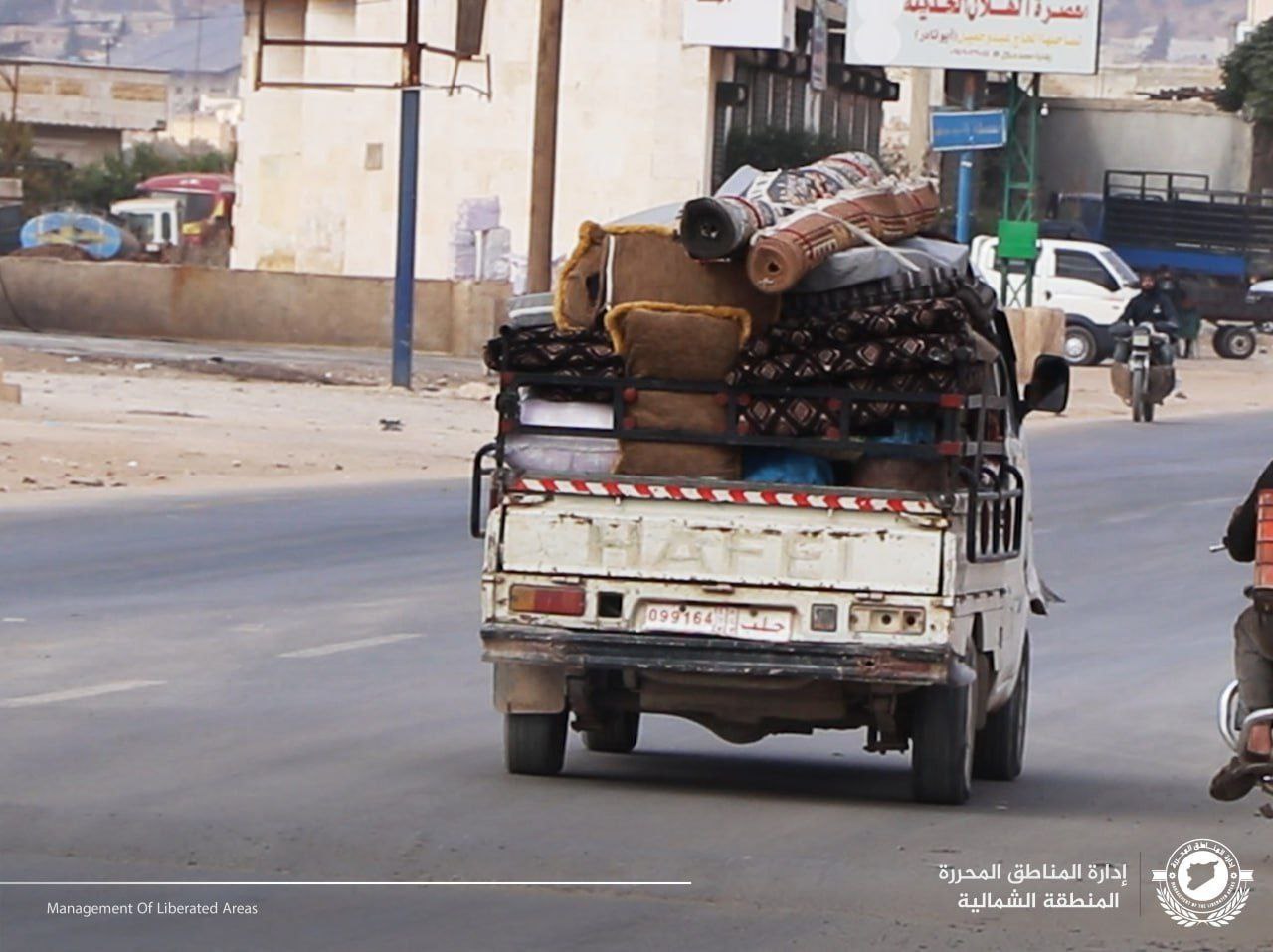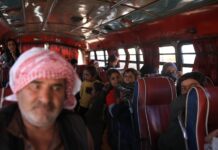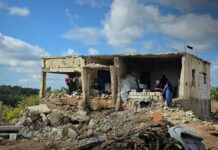
Thousands of Syrian civilians in the Idlib and Aleppo countryside are once again fleeing their homes as regime forces, backed by Russian and Iranian allies, intensify bombardments across northern Syria. The latest offensive has targeted residential areas and agricultural zones near front-line areas, forcing entire communities to move toward already overcrowded camps and safer, though under-resourced, regions. This deliberate, engineered displacement is placing immense pressure on the liberated areas, which are grappling with both waves of internally displaced people (IDPs) fleeing attacks and an influx of refugees returning from Lebanon as Israeli strikes in Lebanon intensify.
The Syrian Response Coordinators, a humanitarian monitoring organization, recorded the forced displacement of over 1,843 people from 37 towns and villages in just 48 hours. Most affected are women and children, who comprise 81% of the displaced population. The mounting violence has disrupted a brief period of relative calm that had encouraged some families to return to their homes, underscoring the precarious security situation in northern Syria.
Daily assaults by Assad’s forces and their allies have systematically targeted villages and civilian infrastructure, leaving families with little choice but to abandon their homes and seek refuge in camps or areas further from military operations. According to the Syrian Salvation Government’s Ministry of Development and Human Affairs, Assad forces and Iranian militias continued shelling of residential areas along the front-lines, directly affect over 55,000 families, forcing many to relocate to safer areas in liberated zones and near the Turkish border.
The Response Coordinators’ team reported casualties among civilians due to this recent escalation, which has compounded the urgent need for humanitarian aid as the winter season approaches. The organization’s warning of a potential humanitarian catastrophe stems from the limited support infrastructure in northern Syria, where the current humanitarian response meets only a fraction of essential needs – estimated at 37% in towns and 24% in camps.
The influx of refugees from Lebanon, many fleeing increased Israeli attacks, has further strained northern Syria’s limited resources. These waves of returning refugees, combined with internally displaced Syrians escaping the current offensives, are overwhelming camps and shelters already struggling to accommodate the long-standing displaced population. The crowded conditions have fueled a resurgence of concerns that, as northern Syria’s liberated areas reach their breaking point, another mass exodus of Syrian refugees could ensue, driving thousands toward Turkey and potentially Europe.
Humanitarian agencies, like the UN OCHA, working in the region warn that the deepening crisis poses grave risks to the health, safety, and well-being of displaced Syrians, especially as temperatures begin to drop. Insufficient shelter, food, and medical supplies threaten to leave many IDPs vulnerable to the harsh winter conditions, while underfunded relief efforts are unable to meet the escalating demands. Local aid workers have reported shortages in essential items, including winterized tents and heating equipment, which are critical to protect families during the coming months.
The ongoing displacements may result in another global crisis with thousands of Syrians potentially facing conditions so dire that they are compelled to seek refuge beyond Syria’s borders. Turkey, already home to nearly 3.7 million Syrian refugees, may see an influx of new arrivals, straining its resources further and possibly prompting spillover effects into Europe.
The Syrian Response Coordinators continue to track and document new arrivals in displacement zones while highlighting the need for immediate humanitarian intervention to prevent a worsening humanitarian crisis.









